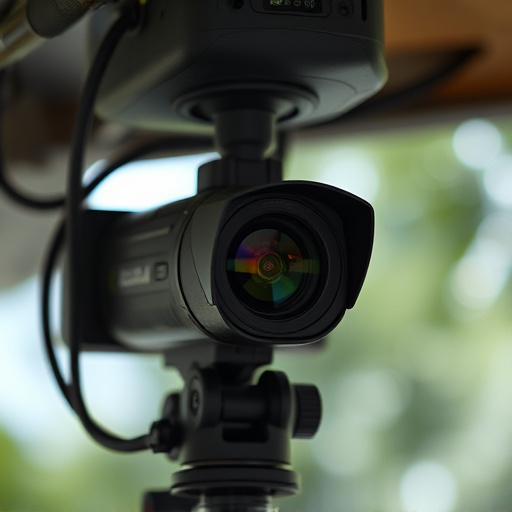Covert recording devices, hidden in everyday objects or infrastructure, capture audio/video secretly but are legally restricted without consent. The effectiveness of these recordings relies on using Most Realistic Looking Security Decoys like fake cameras and sensors to avoid detection. Strategic placement, from public spaces to private homes, requires balancing subtlety with visibility for successful surveillance while respecting privacy rights and local laws. Advanced technology detects hidden devices, necessitating innovative countermeasures like realistic decoys that alert users of potential threats, significantly reducing the risk of covert recording.
Uncover the intricate world of covert recording equipment and its legal boundaries. This comprehensive guide explores the art of deploying hidden cameras while navigating privacy laws. Learn how to select the most realistic-looking security decoys for effective disguise, ensuring optimal placement strategies for recording devices. Discover cutting-edge detection methods and countermeasures to stay ahead in this evolving landscape.
- Understanding Covert Recording Equipment and Its Legal Implications
- Choosing the Most Realistic-Looking Security Decoys for Disguise
- Strategies for Effective Placement of Recording Devices
- Detection Methods and Countermeasures to Stay Ahead
Understanding Covert Recording Equipment and Its Legal Implications
Covert recording equipment, also known as hidden cameras and microphones, are devices designed to capture audio or video without the knowledge or consent of individuals being recorded. These gadgets range from tiny, unassuming items like lapel pins or pens to more sophisticated decoys that mimic everyday objects, such as power outlets or fire alarms—the most realistic-looking security decoys. Their placement can vary widely, from public spaces like offices and retail stores to private homes and vehicles.
The use of covert recording equipment raises significant legal implications. In many jurisdictions, it is illegal to install or use such devices without explicit permission from all parties involved. Unauthorized surveillance can lead to severe penalties, including fines and imprisonment. It’s crucial to understand the laws specific to your location, as well as the ethical considerations surrounding privacy rights. Using realistic-looking security decoys must be done responsibly, with full disclosure and transparency whenever possible.
Choosing the Most Realistic-Looking Security Decoys for Disguise
When it comes to covert recording, the key to successful deployment often lies in effective disguise. Choosing the most realistic-looking security decoys is a strategic move to ensure that your equipment remains undetected. Opt for items that seamlessly blend into their surroundings; for instance, a motion-activated fake camera or a weather-beaten sensor can pass as part of the environment, be it an industrial site or an office complex.
Realistic decoys should not only mimic the appearance but also replicate the behavior of genuine security equipment. Consider a decoy that mimics the movement and sounds of a real camera, creating a convincing illusion without raising suspicions. The right choice can make all the difference in gathering untainted evidence while maintaining operational secrecy.
Strategies for Effective Placement of Recording Devices
Placing recording devices effectively requires a balance between subtlety and visibility, depending on the environment and desired outcome. One of the most powerful strategies is to utilize most realistic looking security decoys. These can range from fake cameras to mock security personnel figures. Positioning them in plain sight can deter potential intruders while still capturing valuable data. The key is to make these decoys appear genuine, aligning with their surroundings without drawing unnecessary attention.
For more discreet operations, consider embedding recording equipment within everyday objects or infrastructure. For instance, a covert camera hidden inside a decorative garden stone or a voice recorder disguised as a common household item can provide surprising levels of detail. The art lies in blending these devices seamlessly into the environment to avoid detection, making them ideal for long-term surveillance scenarios.
Detection Methods and Countermeasures to Stay Ahead
Detection methods and countermeasures are an ongoing arms race in the world of covert recording. Traditional methods involve visual inspection, but with advancements in technology, sophisticated equipment can now detect hidden cameras and microphones almost imperceptibly. One of the most effective countermeasures is to employ realistic-looking security decoys. These devices mimic real security hardware while housing sensors to alert users of potential hidden recording devices.
Decoys range from mock security cameras with functional LED indicators to replica power outlets concealing listening devices. Their lifelike appearances make them difficult to distinguish from genuine equipment, providing an extra layer of protection for sensitive areas. By staying ahead of would-be recorders and employing these innovative countermeasures, individuals and organizations can significantly reduce the risk of covert surveillance.
In the ongoing battle against covert recording, staying one step ahead requires a multi-faceted approach. By understanding the legal implications of hidden cameras and investing in sophisticated yet realistic security decoys, individuals and organizations can significantly deter unauthorized surveillance. Strategic placement, combined with advanced detection methods, allows for proactive protection against invasive privacy breaches. Staying informed about the latest trends in both technology and countermeasures is key to ensuring a secure environment in today’s digital landscape.
